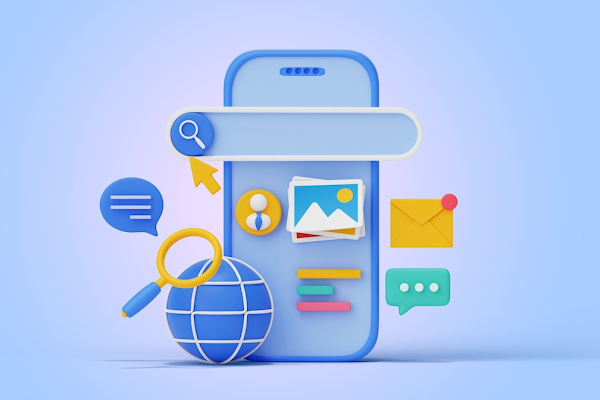As a Data Whisperer in the dynamic field of User Experience (UX) and User Interface (UI) design, the journey involves weaving together the 5 W's framework – Who, What, When, Where, and Why. This framework serves as a compass, guiding designers through the maze of user needs and behaviors, ultimately leading to solutions that resonate with emotions.
Data Whisperer: Transforming User Emotions into Actionable UX Design Solutions
As a Data Whisperer in the dynamic field of User Experience (UX) and User Interface (UI) design, the journey involves weaving together the 5 W's framework – Who, What, When, Where, and Why. This framework serves as a compass, guiding designers through the maze of user needs and behaviors, ultimately leading to solutions that resonate with emotions.
Unveiling the 5 W's Framework in UX Design
The 5 W's framework is the cornerstone of UX design. It begins with understanding "Who" the users are – their demographics, preferences, and goals. "What" tasks they perform on the platform, "When" they engage with it, "Where" these interactions occur, and most importantly, "Why" they make certain choices. This comprehensive approach transforms user data into actionable insights that shape the design process.
The 4 D's of UX Design: Discover, Define, Develop, Deliver
Beyond the 5 W's, the 4 D's – Discover, Define, Develop, and Deliver – form a roadmap in the UX design process. "Discover" involves understanding user needs and conducting research. "Define" refines the gathered insights into a clear problem statement. "Develop" brings ideas to life through prototyping and testing, and finally, "Deliver" ensures a seamless transition from design to implementation.
The UX Design Process: A Complete Actionable Guide
The UX design process is a dynamic journey that goes beyond creating visually appealing interfaces. It starts with empathetic research, understanding user pain points and aspirations. The next steps involve ideation, prototyping, and testing to refine designs. Iterative cycles of feedback and adjustments ensure the final product aligns seamlessly with user expectations.
Deconstructing the UX Design Lifecycle into 4 Parts
The UX design lifecycle can be dissected into four interconnected parts. "Research and Discovery" involves understanding user needs and market trends. "Design and Prototyping" transform these insights into tangible solutions. "Testing and Iteration" fine-tune the designs based on user feedback, and finally, "Implementation and Launch" bring the polished product to the hands of users.
The Whispers of User Emotions in Design
User emotions are like whispers that guide the design process. Understanding the emotional journey of users is crucial in creating designs that not only function but evoke positive feelings. By aligning designs with user emotions, designers create experiences that leave a lasting impact and foster user loyalty.
Humanizing Data: The Role of Empathy
Data becomes meaningful when paired with empathy. Empathy is the ability to step into the user's shoes, feel their frustrations, and share their joys. This humanizing touch transforms raw data into a narrative, guiding designers to make decisions that resonate with the lived experiences of users.
Visualizing Data: From Numbers to Narratives
Numbers and graphs may seem cold, but when transformed into visual narratives, they become powerful storytellers. Visualizations help designers communicate complex data in an engaging and accessible manner, fostering a shared understanding among stakeholders and team members.
Usability Testing: The Reality Check for Designs
Usability testing is the reality check in the design process. It involves observing users interact with prototypes, uncovering potential stumbling blocks, and validating design decisions. This hands-on approach ensures that the final product meets user expectations and delivers a seamless experience.
Iterative Design: The Continuous Refinement Loop
Iteration is the heartbeat of UX design. Through continuous testing, feedback, and adjustments, designers refine their solutions. This iterative approach acknowledges that design is an evolving process, and each cycle brings the design closer to perfection by addressing user needs and pain points.
Collaboration in Design: A Symphony of Perspectives
Design is a collaborative symphony. Engaging stakeholders, developers, and other team members brings diverse perspectives to the table. Collaboration ensures that the design aligns with business goals, technical feasibility, and most importantly, the needs of the end-users.
User-Centered Design: A Holistic Approach
At the core of UX design lies the principle of user-centered design. It emphasizes placing users at the heart of the design process. By actively involving users in decision-making, designers create solutions that not only meet functional requirements but also resonate with the desires and emotions of the people using the product.
Conclusion: Orchestrating Design Symphony with Data Whispers
In conclusion, the journey of a Data Whisperer in UX design involves orchestrating a symphony of data whispers – the 5 W's, the 4 D's, and the iterative cycles of the UX design lifecycle. By weaving together these elements with empathy and collaboration, designers transform raw data into actionable solutions that not only meet user needs but resonate with their emotions, creating memorable and impactful user experiences.
